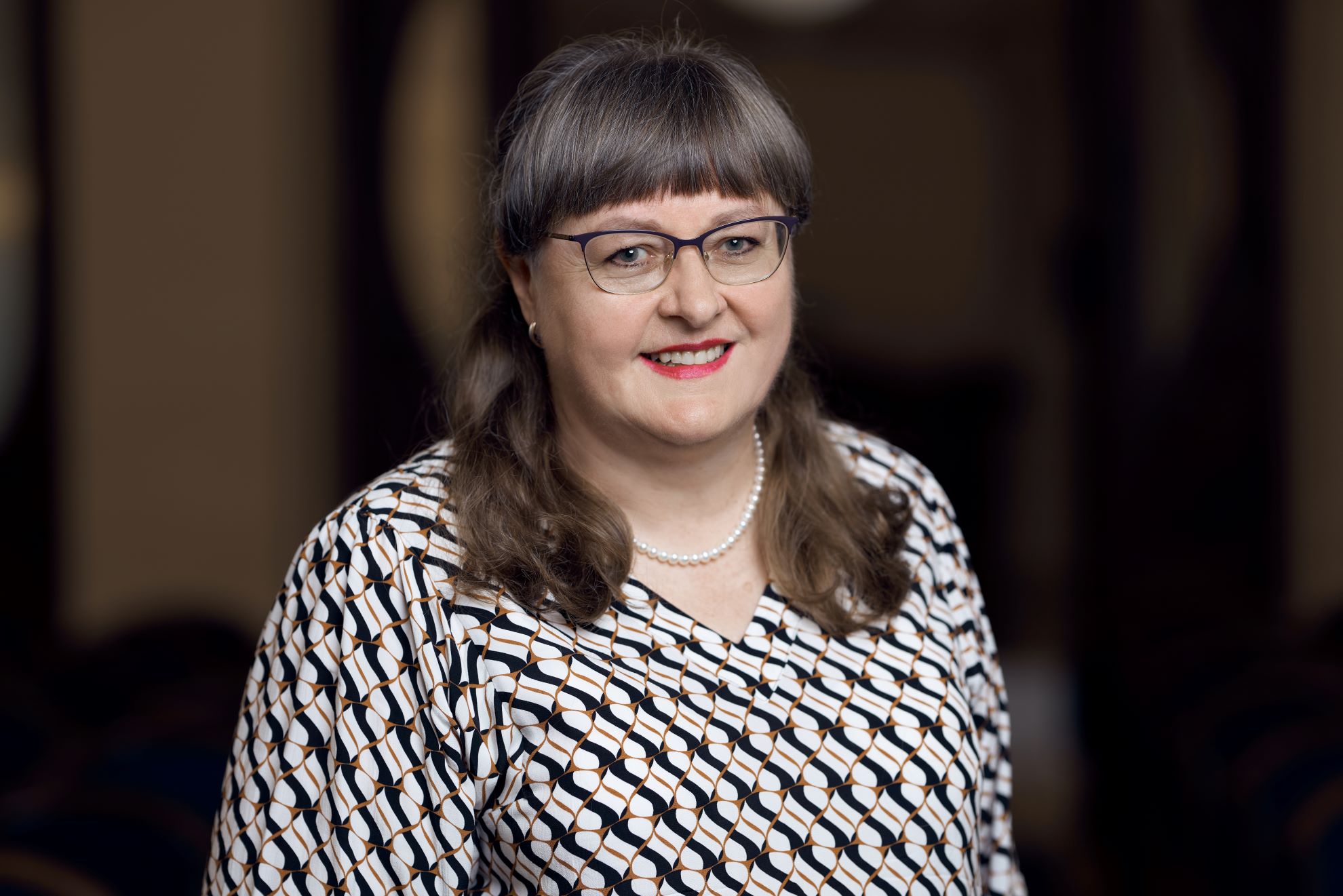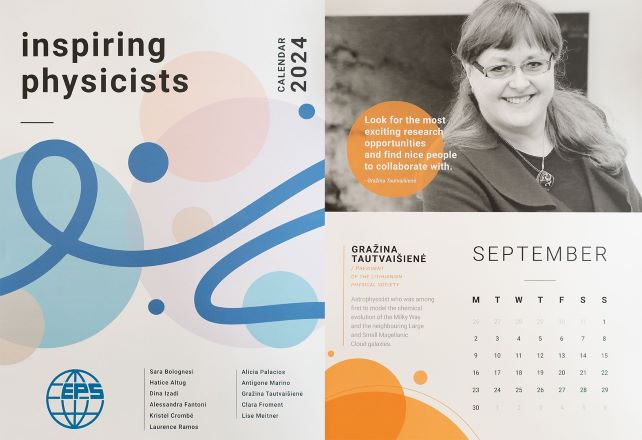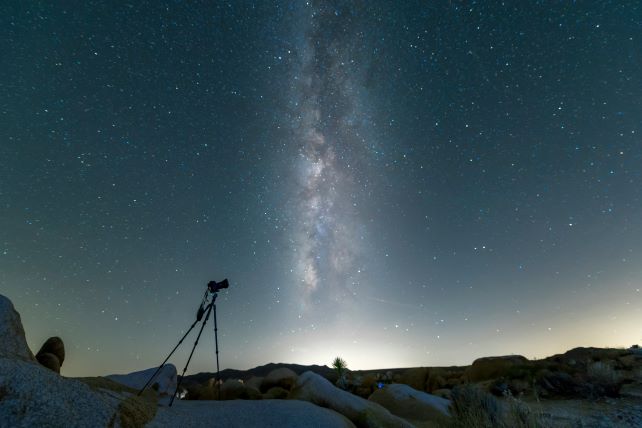Renowned Lithuanian Astrophysicist Prof. Tautvaišienė: Physics Is a Field of Study and Research Open to Both Men and Women
 Prof. Gražina Tautvaišienė
Prof. Gražina Tautvaišienė
“Look for the most exciting research opportunities and find nice people to collaborate with,” is the advice given to young scientists by Gražina Tautvaišienė, Professor at the Institute of Theoretical Physics and Astronomy of Vilnius University (VU) and Head of Molėtai Astronomical Observatory. She has been featured in this year’s Calendar of Inspiring Physicists published by the European Physical Society (EPS), where Lithuania’s most prominent astrophysicist stands among Nobel Prize winners, laureates of EPS awards, and other distinguished EPS members.
This initiative aims to raise the profile of women in physics, presenting inspiring female physicists who can act as role models for the next generation of scientists.
The curiosity and persistence of scientific minds
Prof. Tautvaišienė represents Lithuania at the EPS as the President of the Lithuanian Physical Society. She has been selected for this year’s calendar for her significant contribution to astrophysical science and active work in training the next generation of physicists. In Lithuania, she has already organised more than 20 international summer schools for astrophysics students and PhD candidates.
“For such a small country, it is crucial to establish connections with foreign scientists because significant international-level results can only be achieved through collaboration and access to the world’s largest and most up-to-date scientific infrastructure. A single scientist has limited impact,” states the astrophysicist.
When asked how she developed an interest in physics, the researcher says that she much preferred logical sciences over memorising poems at school. She believes it is very important for schoolchildren to be acknowledged and encouraged by their teachers and other people around them, but they also have to make an effort to figure out what they like.
“During my school years, I started participating in Physics Olympiads; this was when I discovered my passion for this particular field. Then I opted for astrophysics studies at VU because I was most fascinated by understanding the evolution of the universe, the galaxy, and the stars, as there was so much left to discover,” recalls Prof. Tautvaišienė.
According to the astrophysicist, she also loved reading books about famous scientists and politicians, delving into their thoughts and perspectives on the significance of their work. The biography and scientific accomplishments of Maria Skłodowska-Curie were what resonated with her the most.
“I found it interesting that these remarkably successful and widely recognised people hadn’t set out to do this; it was almost unintentional and entirely through their genuine passion.”
By reading such books, Prof. Tautvaišienė realised that scientists are inquisitive, persistent, and hard-working people – just like she is now, persistently pursuing her research in the beloved field of astrophysics.

Her doctoral thesis relied on clear nights in the Caucasus
When Prof. Tautvaišienė completed her master studies at VU and started her scientific career, it was photometric research that dominated in Lithuania, where scientists use filter systems to observe stars and make various assumptions about the differences in their brightness, such as the temperature of the stars and their overall metallicity.
“But fortune was on my side – my supervisor, Prof. Vytautas Straižys, offered me the task of kick-starting spectroscopic research in Lithuania. This research field can determine the chemical composition of stars with much greater precision, measure the orbital velocity of stars, and provide significantly more information about these astronomical objects,” explains the scientist.
However, when Prof. Tautvaišienė started her spectral research, there was no telescope with a spectrograph available in the country, so she had to apply for observation time with the right telescope in order to write her doctoral thesis.
The astrophysicist was lucky enough to spend a few nights every six months making observations with the then world’s largest 6-metre telescope in the Caucasus, and ultimately, she completed her thesis on these observations.
Modelled chemical evolution of the galaxy
However, this did not turn out to be the most challenging period in her research work; that occurred when Lithuania started its movement for independence from the Soviet Union, as the scientist lost access to the spectrograph in the Caucasus and had to look for new partners in Europe. On the bright side, the new collaborations brought major international breakthroughs – she became one of the first people in the world to carry out detailed simulations of the galaxy’s chemical evolution and, with her colleague, proved that our galaxy formed from the centre outwards.
“In 1995, together with British astrophysicist Bernard Pagel, we published a scientific paper in which we simulated for the first time the abundance of 18 chemical elements in our galaxy, thereby determining its chemical evolution. Our research explained what the first stars in the universe looked like, how long they took to explode, what chemical elements were released by these explosions, and how new stars were formed. We discovered how the chemical elements had multiplied during the evolution of the galaxy,” says the scientist, talking about her key discovery.
For many years, she conducted research at the Northern Optical Telescope located in the Canary Islands, whereas for the last decade, she worked on the successful Gaia-ESO project at the European Southern Observatory.
“The observations we collected during this project with the 8.2-metre telescope confirmed that our galaxy is forming from the centre outwards, not the other way around. Previously, it was believed that stars formed in the galaxy’s spheroid, and when they exploded, their material fell into the centre. However, we proved that stars would form in the centre, too,” explains the VU astrophysicist.
Finally, in 2015, a spectrograph developed at the Yale Exoplanet Laboratory was made available in Lithuania at the VU Observatory in Molėtai. A little earlier, thanks to Prof. Tautvaišienė, the then Director of the Institute of Theoretical Physics and Astronomy, Molėtai Astronomical Observatory acquired another vital instrument for skywatching – a charge-coupled device (CCD). The first asteroid discovered by the famous Lithuanian astrophysicist Kazimieras Černis with this device was named after Gražina Tautvaišienė.

Anyone can study physics
Prof. Tautvaišienė is one of the few women who have made it big in the world of astrophysics because her parents empowered her to make her own decisions on what she liked best at school and to follow her passion. Yet, she feels that some girls who are interested in science may lack the bravery to follow their aspirations because their parents tell them or their teachers say that science is not for girls. According to the Professor, those schoolgirls struggling with the exact sciences are often denied the help and support they need.
“No one is allowed to limit a child’s potential. Everyone can achieve anything they want if they have the will. Although physics remains a male-dominated field, anyone can study it because both men and women are equally capable of performing intellectual work in any scientific field,” concludes the renowned Lithuanian astrophysicist.